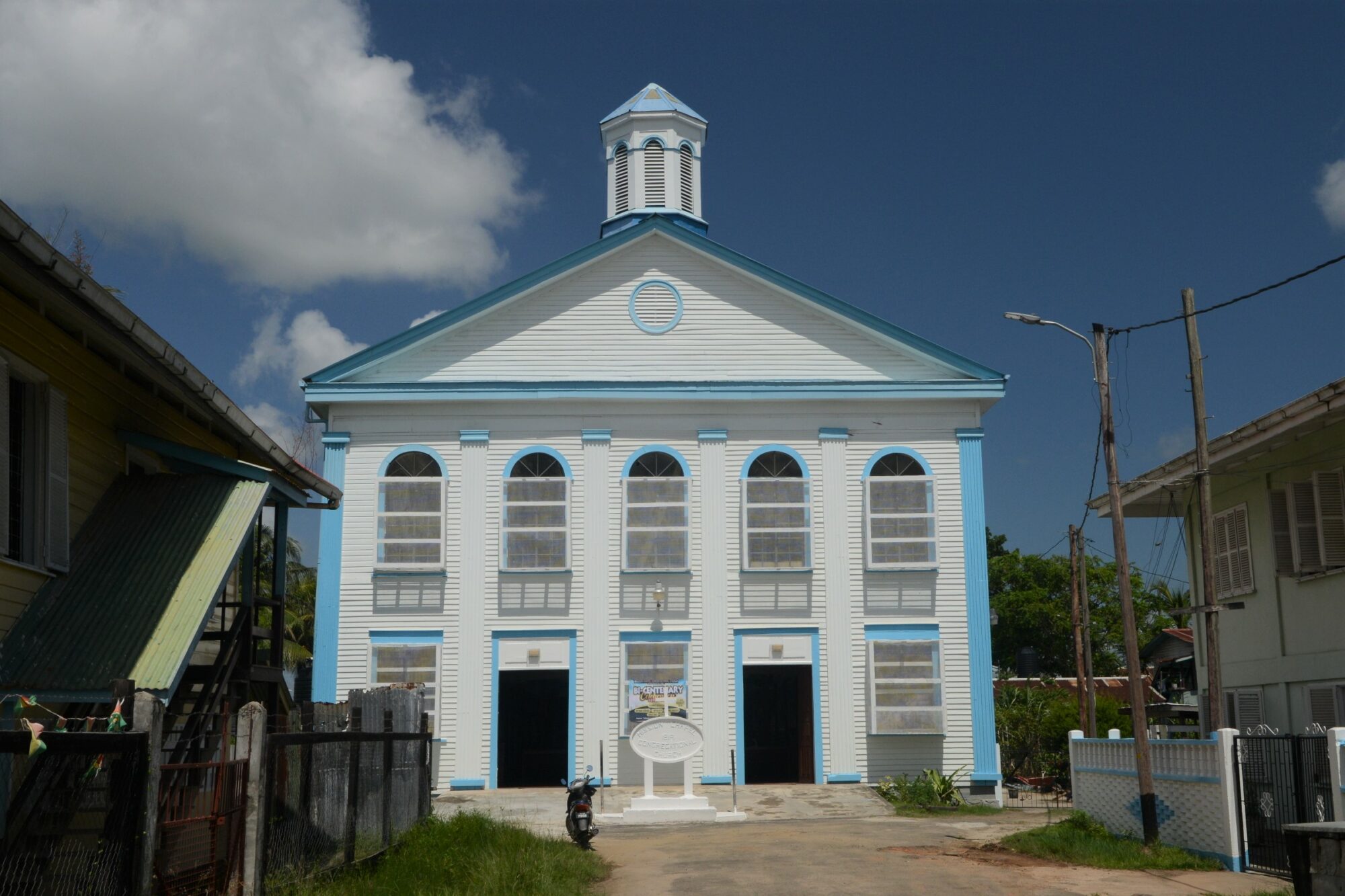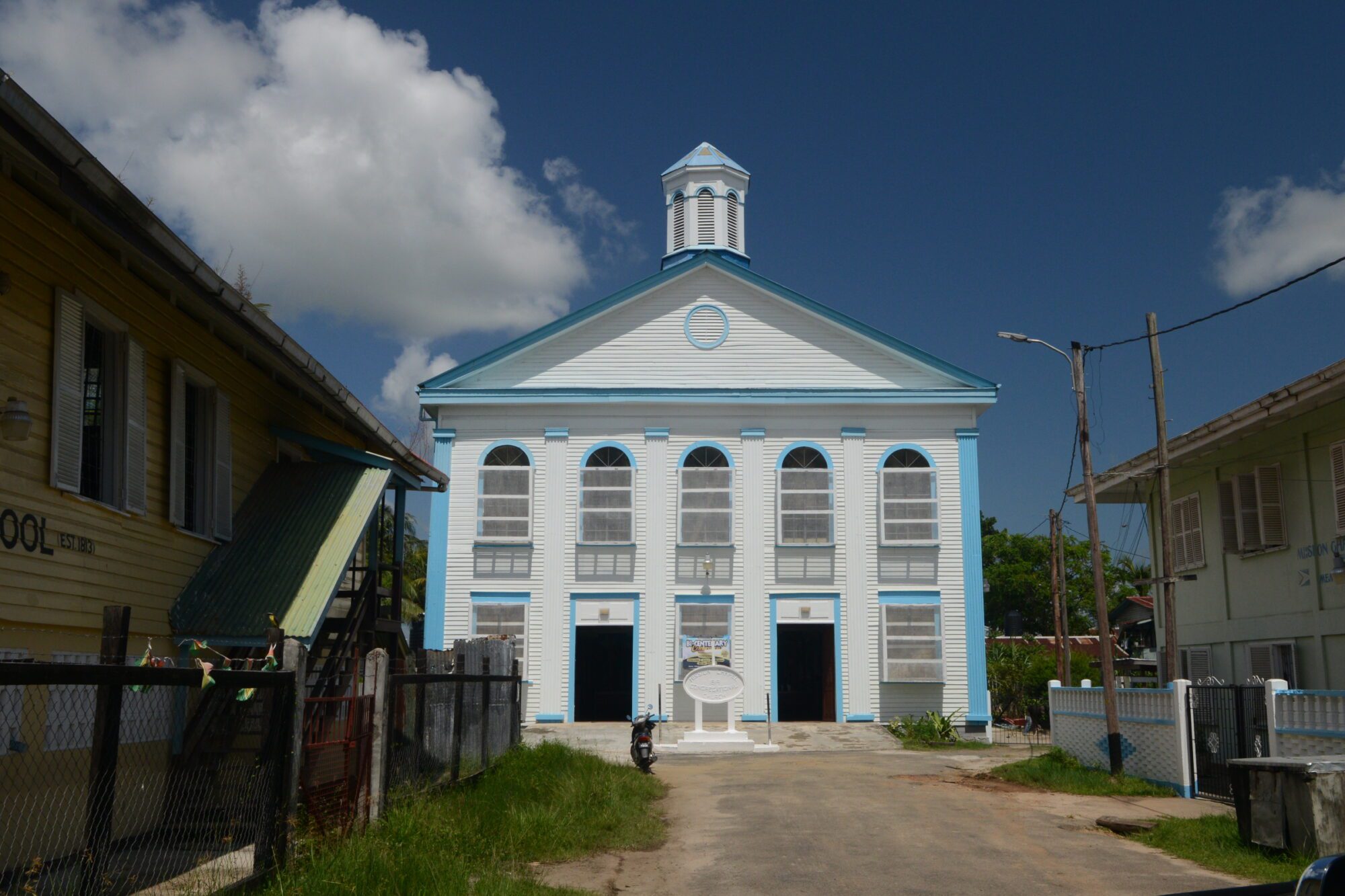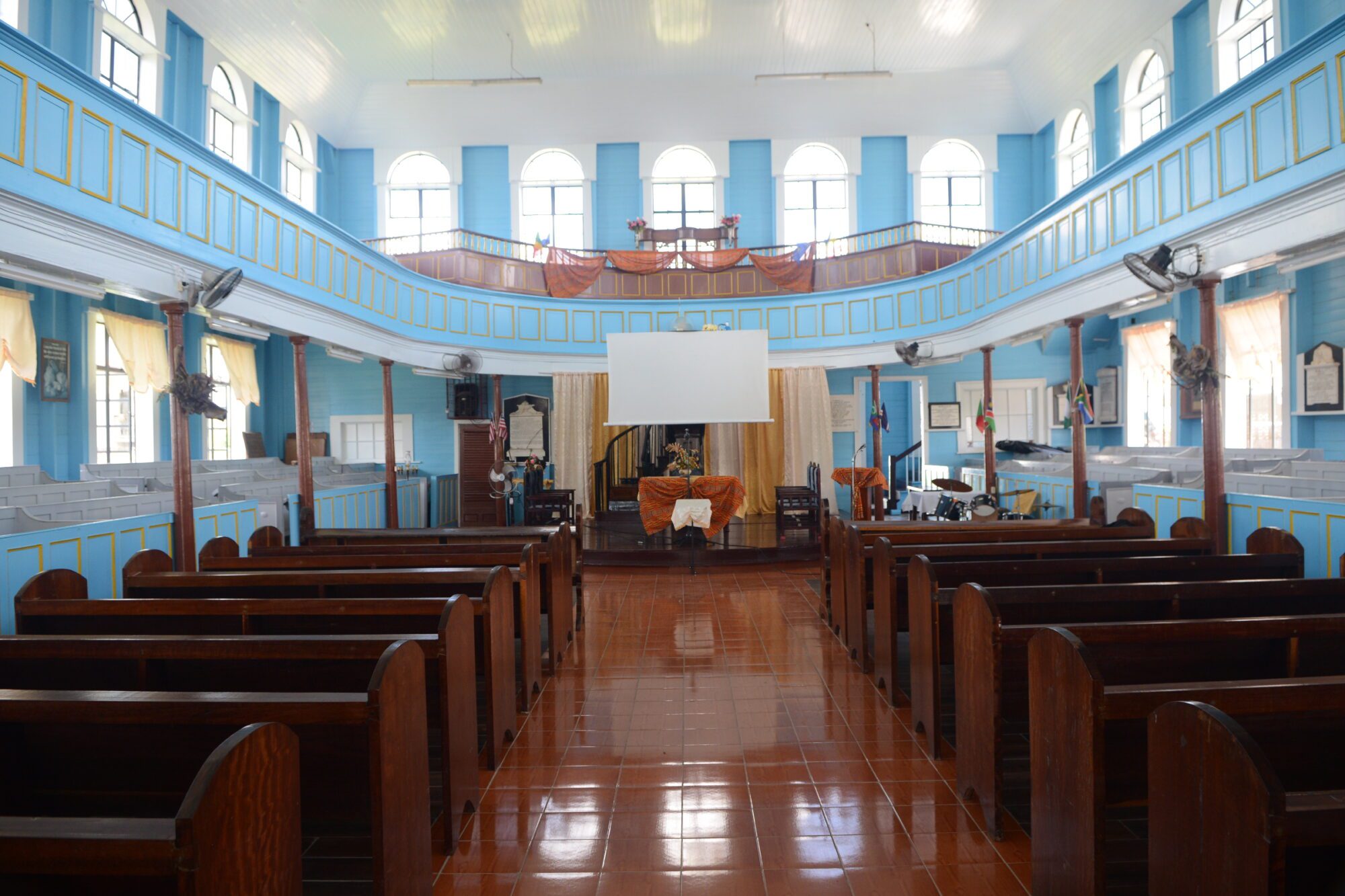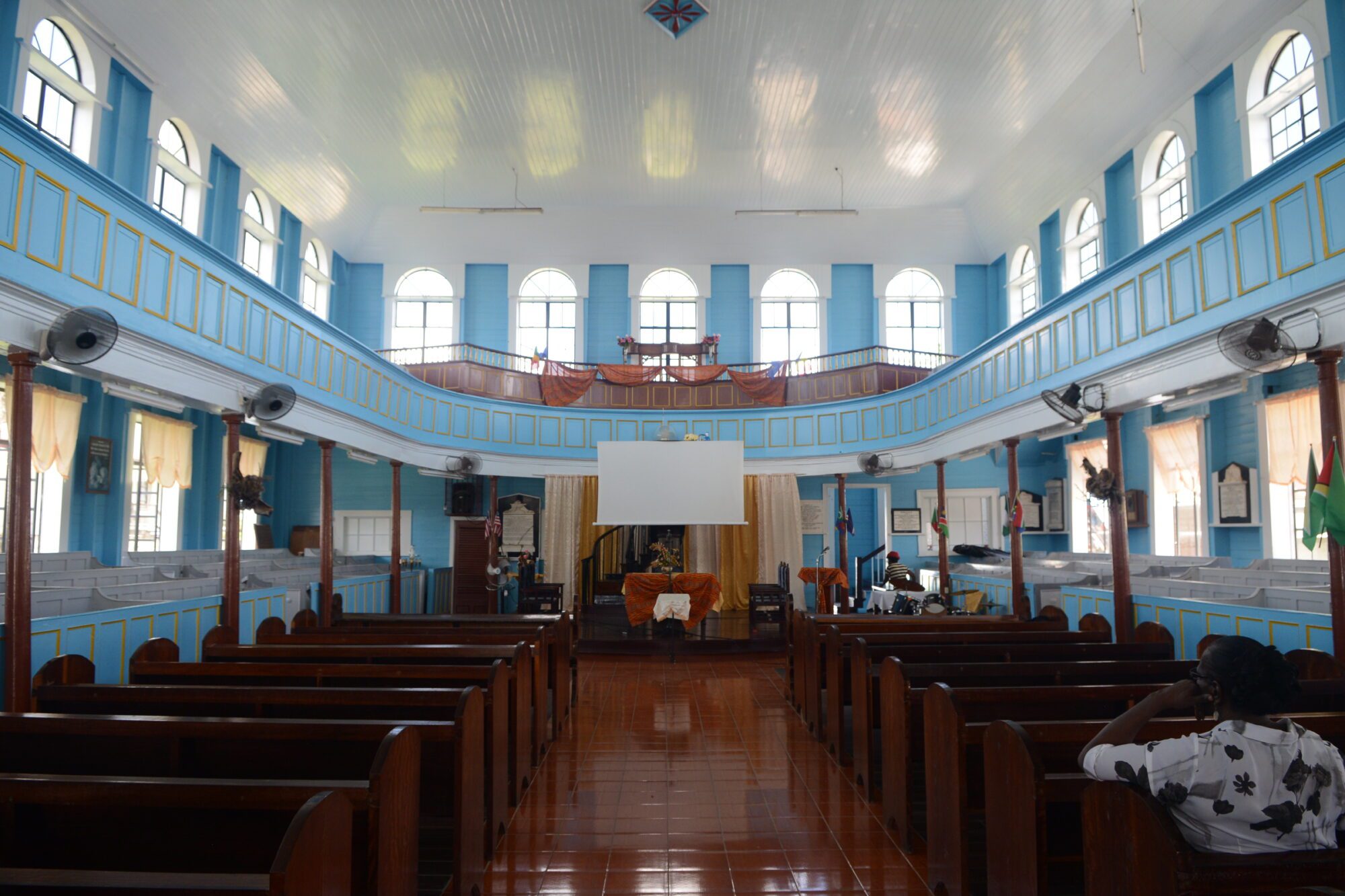Location: New Amsterdam, Berbice
Classification: Religious
Period/ Year Built: Established 1815, current building completed circa 1841
Historical Background / Description: Mission Chapel Congregational Church is located at Lot 12 Chapel Street, New Amsterdam, Berbice. The church which was established in 1815, by Reverend John Wray is one of the oldest structures in New Amsterdam. Wray’s arrival in British Guiana marked the beginning of the congregationalism movement within the British colony. He arrived in Demerara on February 6, 1808, at the request of a Dutch planter, Hermanus Post, who penned a letter in 1807 to the London Missionary Society for one of its members to be made available to preach to his slaves. After Wray’s arrival, the Bethel Congregational Church was established on Post’s Le Ressouvenir plantation.
While working on the plantation, the Reverend developed sympathy for the slaves after witnessing the inhumane treatment they endured by plantation owners. He later travelled to Berbice in 1813 to establish the church called Orange Chapel which was built at Sandvoort. The same year, Wray travelled to New Amsterdam and began preaching to the slaves. By 1817, he made a petition for assistance to obtain a church to further his missionary work. In 1818, he received his retroactive salary of £400 and purchased a plot of land located at lot 12 of the first empolder of the town of New Amsterdam.
He continued his biblical teachings underneath a tamarind tree located on the land bought, while the church was being constructed. Mission Chapel Congregational Church was completed and consecrated in February 1819. It was a simple building and rejected no one, provision was made by placing a ramp for all slaves to walk, crawl or creep to church services. The church was the first that did not have separate pews for the slaves and white population of the colony.
The building in 1822 became too small and was enlarged, a school was also built. Both were destroyed by arson in 1823, the year of the Demerara Uprising. The church and the school were rebuilt and Mission Chapel was again consecrated in 1825. This church, over time was considered small; and in 1841, the third and present church’s foundation stone was laid. Some notable architectural features of the two-storey timber building include its lantern, pediment, arched and round (rose) windows and full height ancient Roman like false columns at the front façade.








